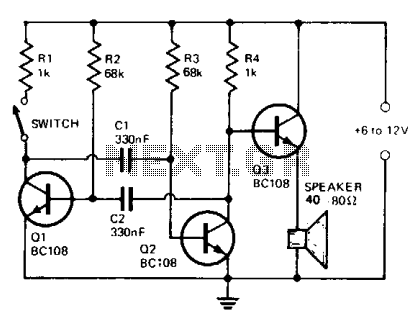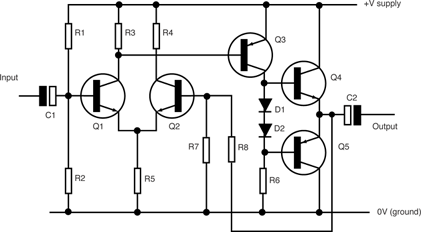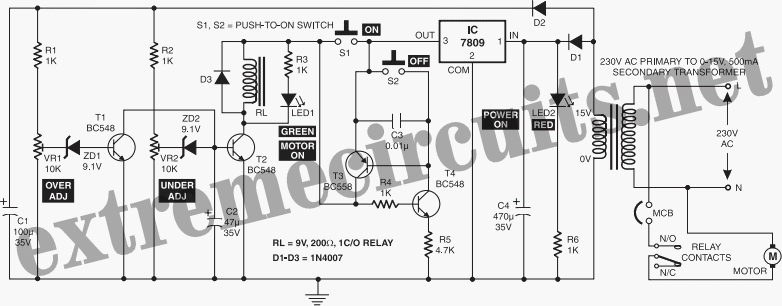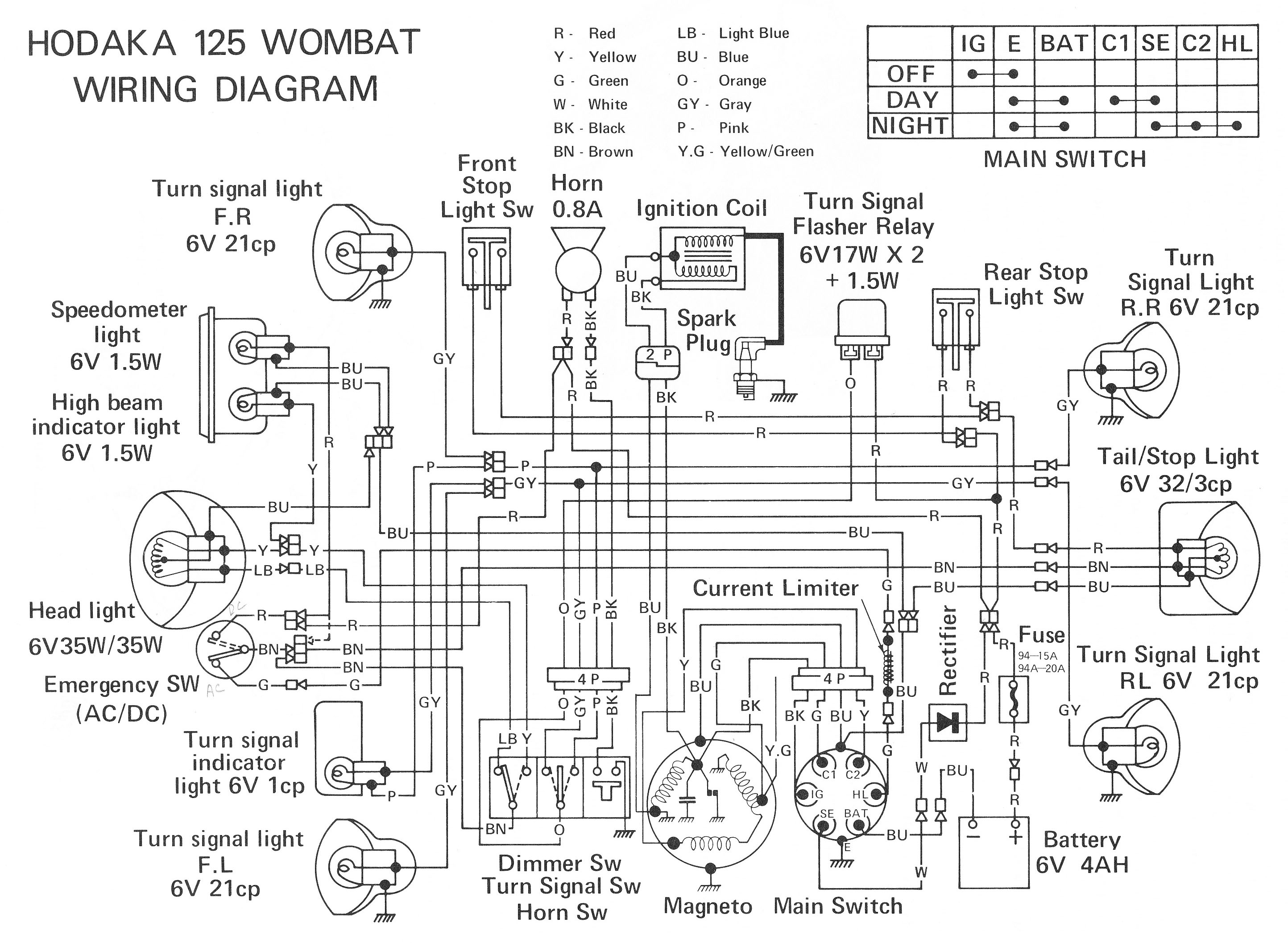
Percussion electronic doorbell 1
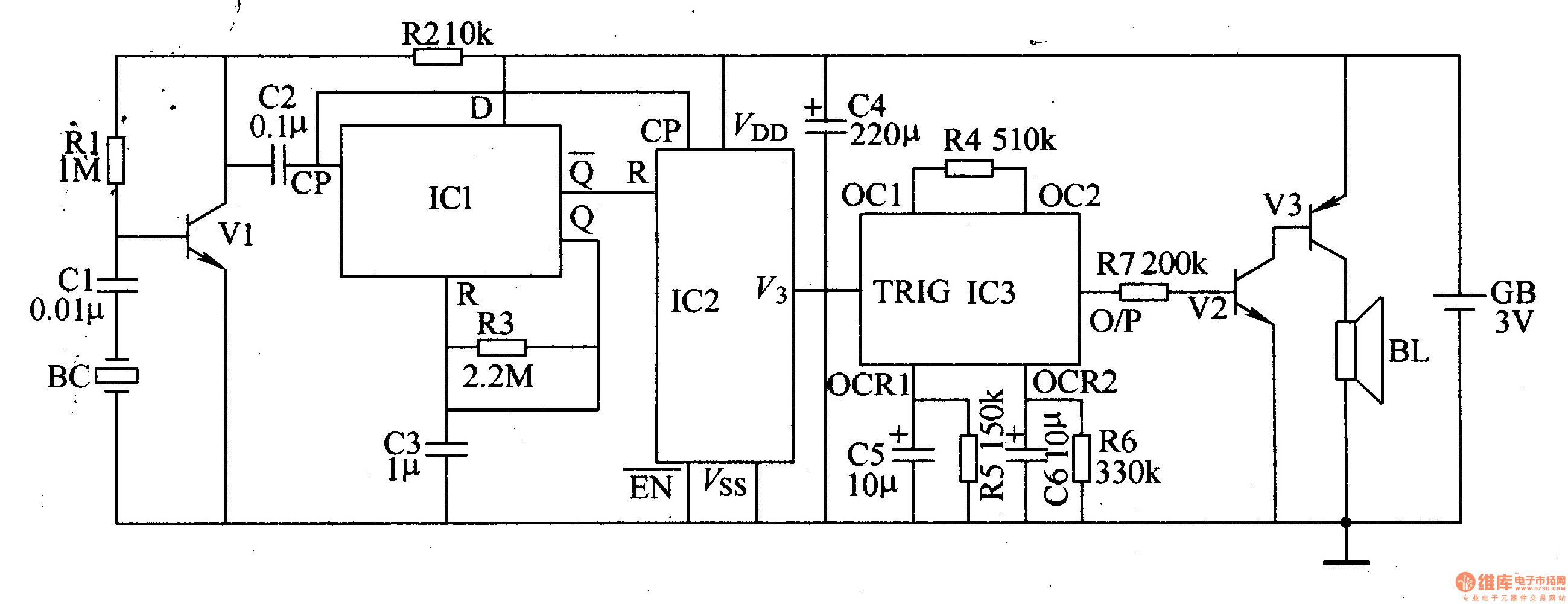
The electronic doorbell circuit consists of a pickup amplifier, a monostable trigger circuit, a pulse counter circuit, a music generating circuit, an audio amplifier circuit, and additional components. The pickup amplifier circuit is composed of a piezoelectric ceramic element, an amplification tube, resistors, and a capacitor.
The electronic doorbell circuit provides a comprehensive solution for generating sound alerts upon activation. The pickup amplifier captures the sound of the doorbell press using a piezoelectric ceramic element, which converts mechanical vibrations into electrical signals. This signal is then amplified by the amplification tube, ensuring sufficient strength for further processing.
The monostable trigger circuit is activated by the amplified signal from the pickup amplifier. It generates a single output pulse of a predetermined duration, which is essential for timing control in the circuit. This pulse is fed into the pulse counter circuit, which counts the number of activations. This feature allows for multiple doorbell presses to be registered and can be configured to trigger different responses based on the count.
The music generating circuit utilizes a series of oscillators and sound synthesis components to produce musical tones or melodies. This circuit is crucial for providing a pleasant auditory feedback to the user, enhancing the overall experience of the doorbell system. The output from the music generating circuit is then fed into the audio amplifier circuit, which boosts the signal to drive a speaker or buzzer, ensuring that the sound produced is loud enough to be heard clearly.
Overall, the electronic doorbell circuit integrates various components to deliver a reliable and effective doorbell solution, combining sound generation with user interaction. Each section of the circuit plays a vital role in ensuring the system operates smoothly and efficiently.The electronic doorbell circuit is composed of the pickup amplifier, monostable trigger circuit, pulse counter circuit, music generating circuit and audio amplifier circuit and other components, and it is shown in Figure 3-113. Pickup amplifier circuit consists of piezoelectric ceramic BC, amplification tube Vl, resistors Rl and R2 and capacitor Cl and so on..
🔗 External reference
The electronic doorbell circuit provides a comprehensive solution for generating sound alerts upon activation. The pickup amplifier captures the sound of the doorbell press using a piezoelectric ceramic element, which converts mechanical vibrations into electrical signals. This signal is then amplified by the amplification tube, ensuring sufficient strength for further processing.
The monostable trigger circuit is activated by the amplified signal from the pickup amplifier. It generates a single output pulse of a predetermined duration, which is essential for timing control in the circuit. This pulse is fed into the pulse counter circuit, which counts the number of activations. This feature allows for multiple doorbell presses to be registered and can be configured to trigger different responses based on the count.
The music generating circuit utilizes a series of oscillators and sound synthesis components to produce musical tones or melodies. This circuit is crucial for providing a pleasant auditory feedback to the user, enhancing the overall experience of the doorbell system. The output from the music generating circuit is then fed into the audio amplifier circuit, which boosts the signal to drive a speaker or buzzer, ensuring that the sound produced is loud enough to be heard clearly.
Overall, the electronic doorbell circuit integrates various components to deliver a reliable and effective doorbell solution, combining sound generation with user interaction. Each section of the circuit plays a vital role in ensuring the system operates smoothly and efficiently.The electronic doorbell circuit is composed of the pickup amplifier, monostable trigger circuit, pulse counter circuit, music generating circuit and audio amplifier circuit and other components, and it is shown in Figure 3-113. Pickup amplifier circuit consists of piezoelectric ceramic BC, amplification tube Vl, resistors Rl and R2 and capacitor Cl and so on..
🔗 External reference
